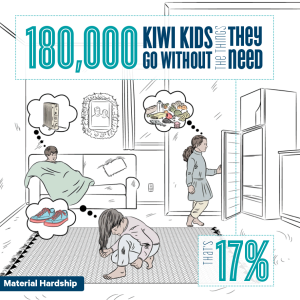 Modernising Child, Youth and Family (CYF): Interim Report makes for a compelling read. The document identifies clearly the areas where the current CYF’s operating model are not working well but it is the children’s voices that speak the loudest in this document, and it would take a hard heart not to be moved by their account of parenting by the state, and what changes they would make.
Modernising Child, Youth and Family (CYF): Interim Report makes for a compelling read. The document identifies clearly the areas where the current CYF’s operating model are not working well but it is the children’s voices that speak the loudest in this document, and it would take a hard heart not to be moved by their account of parenting by the state, and what changes they would make.
- We need more nurturing and love.
- We want a say in what happens to us.
- We have experienced trauma and need help to make sense of what has happened to us.
- We crave belonging and being part of a family who bring out the best in us.
- We want to strengthen our cultural identity.
- We do not stop needing help, support and nurturing just because we turn 17.
The report doesn’t gloss over the profile of children and young people most at risk of CYF intervention but it does stop short of critiquing the role played by a far bigger (economic) system that supports a dominant culture of winners and losers.
“Most of the families of children who are referred to CYF have high levels of long term need and disadvantage. Many are living in families who are experiencing the combined impacts of long-term unemployment, low income, unaddressed physical and mental health needs, parental alcohol and drug addiction and family violence”. Understanding the nature of these underlying circumstances is an essential starting point for understanding how best to respond to child maltreatment and youth offending“.
“Maori children are represented in families with high levels of need and disadvantage”
There is no doubt there are flaws in the CYF’s care and protection system that need to be addressed. A system overly focused on administration, meeting timelines rather than applying professional judgement, coupled with high case loads are issues long been raised by NZCCSS member agencies and others.
At the end of the day though families need an adequate household income (both in work and on a benefit) to provide the basic necessities for children and young people to grow and flourish. A child protection system can only do so much.
As veteran child advocate, Associate Professor, Mike O’Brien, Child Poverty Action Group puts it “There needs to be an urgent focus on improving CYF’s systems to achieve better outcomes for children in State care. However, the Government must also work to protect children and families so they do not need this type of crisis intervention. Child-centred policies would make a tangible difference for children by ensuring they and their families have adequate income, healthy and affordable housing, and quality education and health services“.
The report does contain a glimmer of hope for a review of the financial sanctions policy. Page 20 notes “the Panel expects the Ministry of Social Development will look at the linkages between its own service delivery areas and ensure that housing, youth services and information sharing are addressed proactively for vulnerable children and young people and their caregivers“. Potentially, this could include a review of financial sanction applied to households where there are dependent children. “long-term benefit receipt” is identified as a common factor among families referred to CYF. Adding another layer of disadvantage by reducing an already inadequate benefit undermines some very good work happening in communities to support vulnerable families.
Meanwhile, Anne Tolley, Social Development Minister’s is looking to a major overhaul of CYF and the final report by the Expert Panel (due December 2015) will set the direction to what has been signaled as transformational change in how CYF operates.

Related commentary
